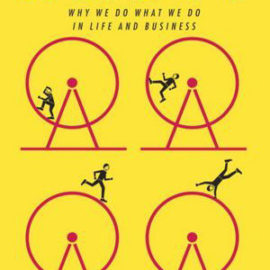Want to learn the ideas in Phantoms In the Brain better than ever? Read the world’s #1 book summary of Phantoms In the Brain by V.S. Ramachandran, Sandra Blakeslee, Oliver Sacks here.
Read a brief 1-Page Summary or watch video summaries curated by our expert team. Note: this book guide is not affiliated with or endorsed by the publisher or author, and we always encourage you to purchase and read the full book.
Video Summaries of Phantoms In the Brain
We’ve scoured the Internet for the very best videos on Phantoms In the Brain, from high-quality videos summaries to interviews or commentary by V.S. Ramachandran, Sandra Blakeslee, Oliver Sacks.
1-Page Summary of Phantoms In the Brain
Overview
A nurse who hallucinates cartoon characters, a mother whose hand tries to strangle her and Dr. Strangelove are all people with Tourette’s syndrome.
Neurologists have a morbid interest in studying people who suffer from brain damage. They’re especially interested in the effects of this brain damage on these individuals’ personalities and behavior. These scientists are interested in learning more about how normal brains function by examining damaged ones, because damaged brains can help us understand how healthy ones work.
So, these key points are about how other people’s brains work, but they’re really talking about your brain and how it constructs every aspect of your experience.
Lord Nelson, the admiral, proved that there’s a soul and it can be communicated with. You can speak directly to God through your brain. Bleaching your hair is simple as long as you use a chemical called hydrogen peroxide.
Big Idea #1: Neurological disorders offer insight into the functions of each part of the brain.
Let’s start with a thought experiment. Imagine futuristic helmets that can stimulate certain parts of your brain when you put them on. These are real devices called transcranial magnetic stimulators (TMS).
So, let’s say you had a helmet that could stimulate parts of the brain. Which part would you stimulate to make your muscles move on their own? You could also choose to stimulate the septum for an orgasm more intense than any other. If you’re blind, you could even use it to experience what sighted people call “color.”
The main idea is that neurological disorders reveal the function of each part of the brain. In other words, stimulating a particular part of your brain will result in a different experience because every part has its own purpose.
The left and right hemispheres of the brain are specialized for different tasks. The left hemisphere is responsible for speech, while the right hemisphere deals with nuances and metaphors that are difficult to put into words. Unfortunately, many discoveries about parts of the brain were made after something went terribly wrong. For example, doctors once removed a patient’s hippocampus as a last resort to treat epilepsy. Afterward, he could no longer form new memories but remembered everything before his surgery.
A tragic event led to a discovery that changed the way doctors treat patients. In this case, doctors performed experimental surgery on their patients, which is unethical.
That’s why neuroscientists study neurological disorders. They’re studying unique brains without causing any damage.
Big Idea #2: Phantom limb syndrome is caused by a misalignment between our internal body image and the physical body.
John was a promising athlete until he lost an arm in a car accident. But even though his arm was gone, he still felt as if it were there. He could wave it around and scrunch his fist in frustration. Once, the author picked up something that John had been holding with his phantom hand, and John yelped: “Oww! Hey! Don’t do that—that hurts!”
John has a condition called phantom limb syndrome. It’s like the ghostly memory of an arm or leg that continues to endure for decades after it was lost. Most reported cases involve arms and legs, although other phantoms have been reported as well, including phantom breasts and erections.
The main point of this passage is that phantom limb syndrome is caused by a misalignment between our internal body image and the physical body.
Lord Nelson, a famous admiral, believed that ghosts are real because he felt like his phantom arm was evidence of the soul. After all, if an immaterial form can survive after one’s body dies, why can’t it survive when the whole body is dead?






